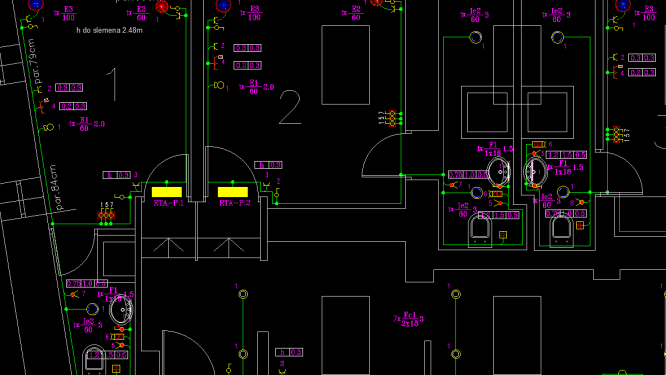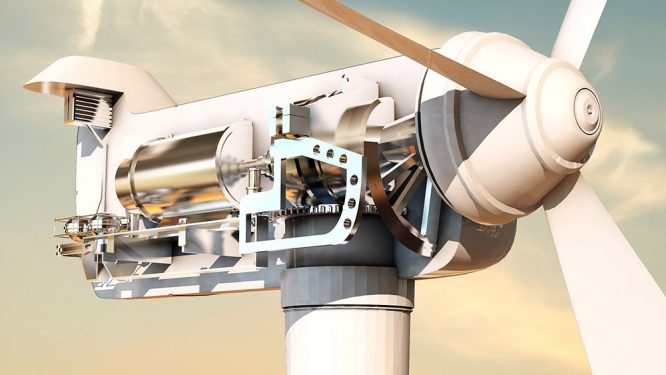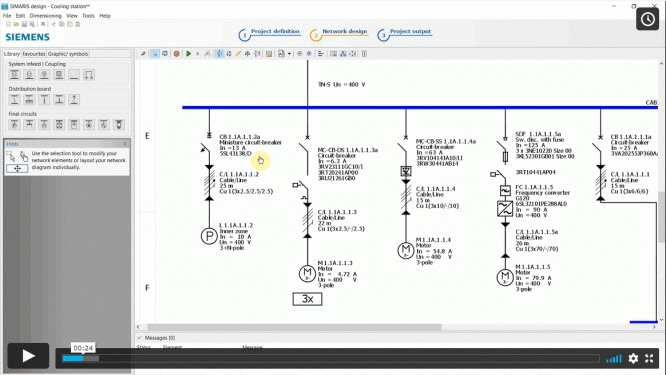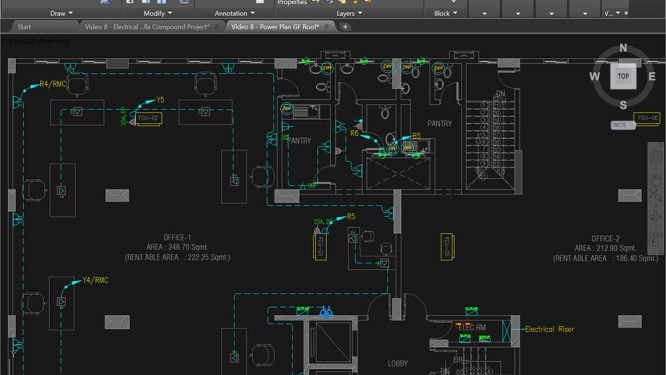Description
This course is a step-by-step guide on performing various load calculations and analyses dedicated to power engineers. It covers load and thermal current calculations, cable sizing, voltage drop, short circuit calculations, and circuit breaker & transformer sizing.
It consists of 19 lessons in 7 hours 41 min. length. English subtitles are included.
This course is closely related to electrical distribution systems and various contracting works. In this
course, you will learn the purpose of detailed calaculations of electrical loads and the difference between dynamic or motors loads and static loads.
We’ll thoroughly explain the importance of including derating factors (DF) in electrical load calculations and what happens if we ignore these factors.
Special attention is given voltage drop (VD) and short circuit (SC) calculations for electrical power cables. You will learn how to choose the correct cross-section area for the neutral cable and the
earthing cable conductor.
The course provides a step-by-step guidanace on how to perform the correct and accurate calculation for any static load, dynamic or motor load, including the starting current for any motor. You will also learn to perform calculations of the power cable and the main circuit breaker (C.B) for a group of individual motors or different loads.
An example of dynamic or motor load calculations is included.
Next, the course explains a very important example of the office building calculations (different static loads and dynamic or motor loads like water pumps, chillers, and elevators) for basement floor, ground floor, first floor, second floor, and roof floor with. We’ll calculate the rated current of each circuit breaker (CB) in ampere (A), and cross-section area (CSA) of each cable in square-mm.
Finally, the last lecture is dedicated to the distribution transformer and the main distribution board
calculations.
Course Summary:
- Loads Calculations
- Static Loads Calculations
- Dynamic Loads Calculations
- Office Building Calculations
Who Is This Course For:
- Electrical design engineers
- Students
- Practicing power system engineers
- Maintenance staff
- Electrical engineering students planning on pursuing a career in power engineering
Requirements:
- The basics of power systems
- Knowledge of basic protection terms
- Understanding the basic relay protection terminology and principles
- Passion and patience for learning.


 Electrical Designing and Drafting Bundle (Two Courses)
Electrical Designing and Drafting Bundle (Two Courses)  Low-Current Installations: Fire Alarm, CCTV, Data, Telephone, Sound and MATV Systems
Low-Current Installations: Fire Alarm, CCTV, Data, Telephone, Sound and MATV Systems  Mastering Transformer Vector Groups: Learn How To Analyze and Draw Windings Connections
Mastering Transformer Vector Groups: Learn How To Analyze and Draw Windings Connections  Learn Wind Power Systems: Beginner To Intermediate Level Training Course For Engineers
Learn Wind Power Systems: Beginner To Intermediate Level Training Course For Engineers  Digital Protection Course: Structure and Relay Operation Techniques
Digital Protection Course: Structure and Relay Operation Techniques  The Essentials of Capacitor Banks: Connections, Calculations and Relay Protection
The Essentials of Capacitor Banks: Connections, Calculations and Relay Protection  Power Engineering Course: Relay Control and Protection For LV/MV/HV Switchgear
Power Engineering Course: Relay Control and Protection For LV/MV/HV Switchgear  Learn How to Depict Switchgear and Substation Single-Line Diagrams
Learn How to Depict Switchgear and Substation Single-Line Diagrams  Relay Protection Course: Implementation of Digital Logic and Schemes in Protective Relays
Relay Protection Course: Implementation of Digital Logic and Schemes in Protective Relays  Overcurrent Protection Course: Principles, Relays, Schematics and Settings
Overcurrent Protection Course: Principles, Relays, Schematics and Settings  Gas-Insulated Switchgear Course: Design, Installation, Operation and Maintenance, Testing
Gas-Insulated Switchgear Course: Design, Installation, Operation and Maintenance, Testing  Design Course For Solar Energy Systems (Off-Grid, On-Grid, Protection and Simulation)
Design Course For Solar Energy Systems (Off-Grid, On-Grid, Protection and Simulation)  Power System Protection for Students (Generator, Line and Transformer Schemes Explained)
Power System Protection for Students (Generator, Line and Transformer Schemes Explained)  Fundamentals of Generating High Voltage Levels in AC/DC Power Systems
Fundamentals of Generating High Voltage Levels in AC/DC Power Systems  The Power Substation Fundamentals Course
The Power Substation Fundamentals Course  Relay Control and Protection Bundle: Complete Relay Circuitry and Schematics (Five Courses)
Relay Control and Protection Bundle: Complete Relay Circuitry and Schematics (Five Courses)  Generator Protection Course: Concepts, Applications and Relay Protection Schemes
Generator Protection Course: Concepts, Applications and Relay Protection Schemes  Practical Course to Power System Operation, Control, Stability, and Optimization
Practical Course to Power System Operation, Control, Stability, and Optimization  Learn AC Distribution Panel Drawings: Single-Line Diagrams, Wirings, and Interlocking Schematics
Learn AC Distribution Panel Drawings: Single-Line Diagrams, Wirings, and Interlocking Schematics 




Reviews
There are no reviews yet.